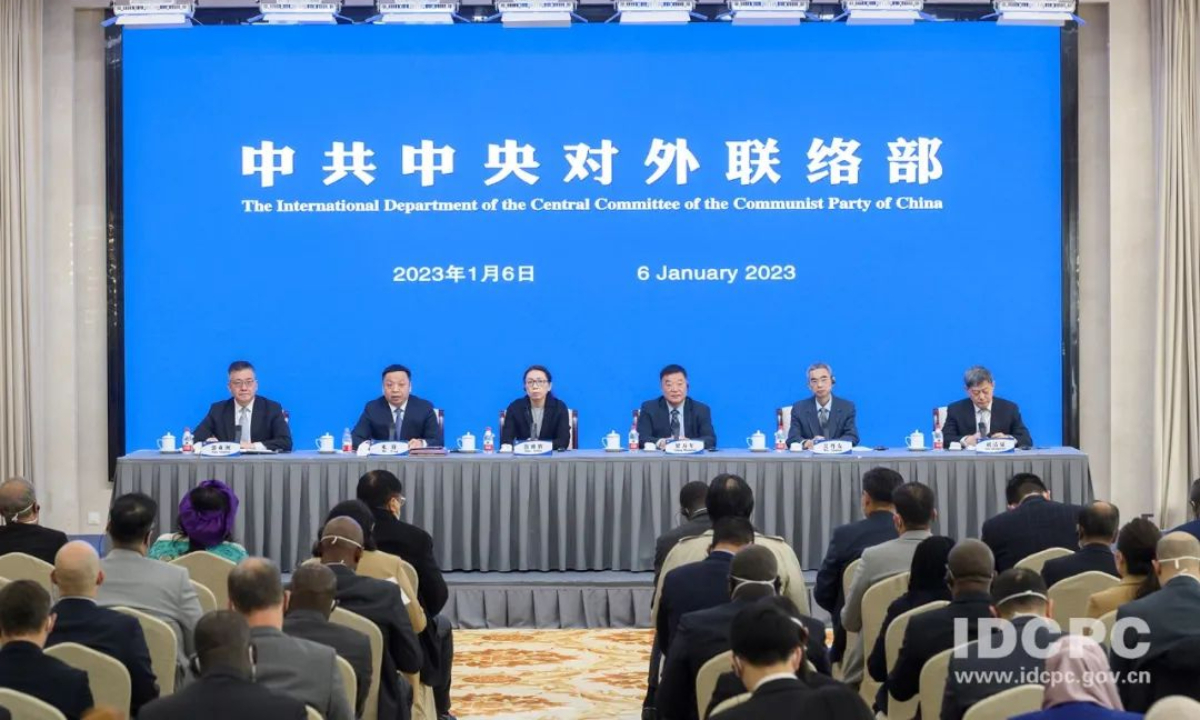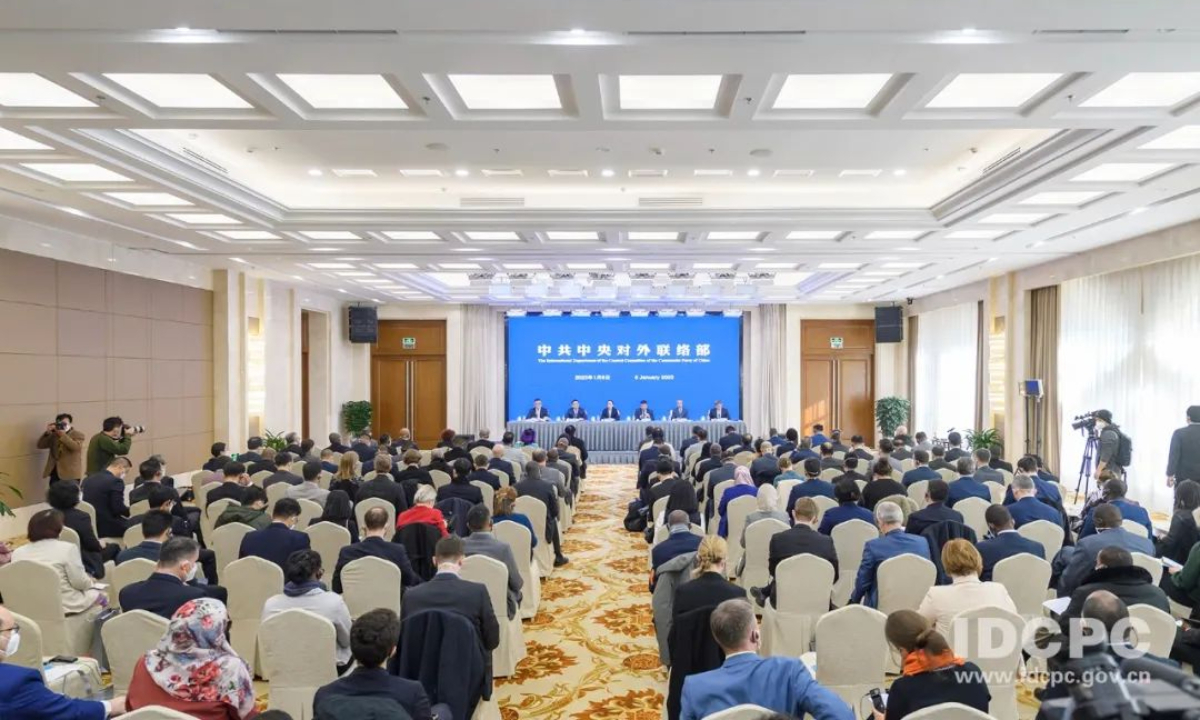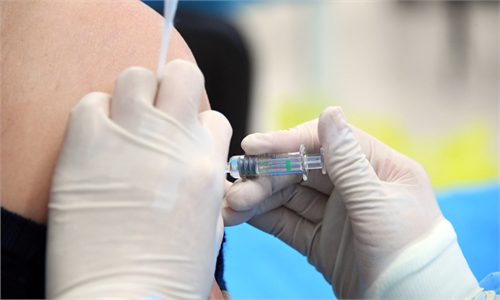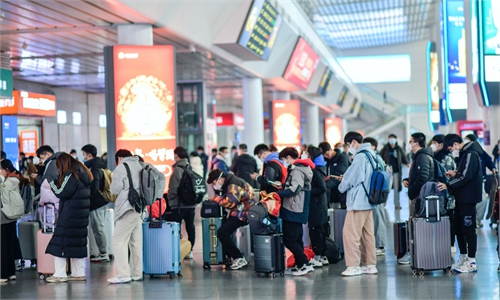Leading Chinese scientists, officials provide update on nation’s preparation to optimize COVID-19 measures, showing confidence

Photo: IDCPC
China has taken the initiative, not passively, to optimize its COVID-19 prevention measures and it has paid close attention to mutation of the virus and sought out better policies and treatments, Liang Wannian, head of China's COVID-19 response expert panel under the National Health Commission (NHC), told a press conference on Friday.
Liang made the remarks when briefing foreign diplomats on China's current COVID-19 prevention measures. On Friday, the International Department of the Central Committee of the Communist Party of China held a press conference to outline China's adjustments on prevention measures and ambassadors, senior officials from more than 130 countries attended the conference.
Since the outbreak of the COVID-19 pandemic, China has closely monitored the changes of the virus and related diseases and altered prevention measures in accordance with different conditions - this fits the logic and rules of epidemic prevention, Liang said at the conference.
Based on the characteristics of the variants that have spread across China and the epidemic situation and the experience of implementing the 20 optimized measures and ten new measures on further optimizing the COVID-19 response, China has taken the initiative to optimize the prevention measures, and was not forced to do so, Liang said.
By making new adjustments, the prevention measures can be more scientific, accurate, practicable and targeted. New policies would be better to ensure normal life and production, coordinate economic development and medical needs and to protect the people's lives and health, said the expert.
Currently, China has shifted prevention focus to preventing severe cases and deaths. It is also working to improve vaccination, especially among the elderly. Also, the country is working to promote study, production and supply of medicines to meet residents' needs, Liang said, noting that China has also monitored mutation of the virus, especially on the transmission and pathogenicity, said Liang.
China is also working to further optimize medical treatments and it has strengthened the prevention capability at grassroots levels. More focus will be given to key areas, including nursing houses and welfare houses, Liang stated.

Photo: IDCPC
During the conference, Jiao Yahui from the NHC also offered more details on China's preparations on medical resources and treatment on the virus.
China has experienced a period with infections quickly climbing and different parts of the country may successively encounter infection peaks. Severe cases continued to increase as many cities have experienced infection peaks, and with the population flow during the Spring Festival, infection rate in cities and rural areas may increase at the same time, posing challenges to medical resources, said Jiao.
China has worked with utmost efforts in treating infections and is making preparations on medical resources. So far, China has set up nearly 57,000 fever clinics with 16,000 in above-second-tier hospitals and 41,000 in grass-roots medical institutions. Temporary fever clinics have been set up in cities such as Beijing and provinces and regions including Zhejiang to meet demands, Jiao detailed.
As of January 4, China had 1,310 hospitals specialized for COVID-19 with 588,000 beds - 61,000 ones are for severe cases and another 1,539 sub-tier hospitals with 834,000 beds. The number of patients hospitalized in there are 184,000 and 45,000 respectively with the usable rate being 31.5 percent and 5.4 percent.
As of January 5, China has 216,000 beds for severe cases and 128,000 doctors and 333,000 nurses focusing on treating severe cases. 135,000 beds can be adjusted and used for severe cases. Moreover, China has also made preparations on the equipment for treating severe cases, including 2,857 ECMO and more than 240,000 breathing machines, according to data from the NHC.
Jiao noted that to strengthen medical services in rural areas, China has built assistance system between hospitals in cities with medical institutions in counties, streamlining transfer channels and improving remote guidance.
China has accomplished the transformation of medical institutions at all levels in short time. The current resources, including beds and equipment can meet the demands for medical treatment, Jiao said, noting that they will continue monitor the development of epidemic situation and adjust the policies based on conditions.
"We have the confidence, capability. And the wisdom to make overall victory during the new prevention phase. People living in China would get equal medical service with the Chinese citizens and we will also cooperate with related departments in the medical service for foreign patients," Jiao said.




